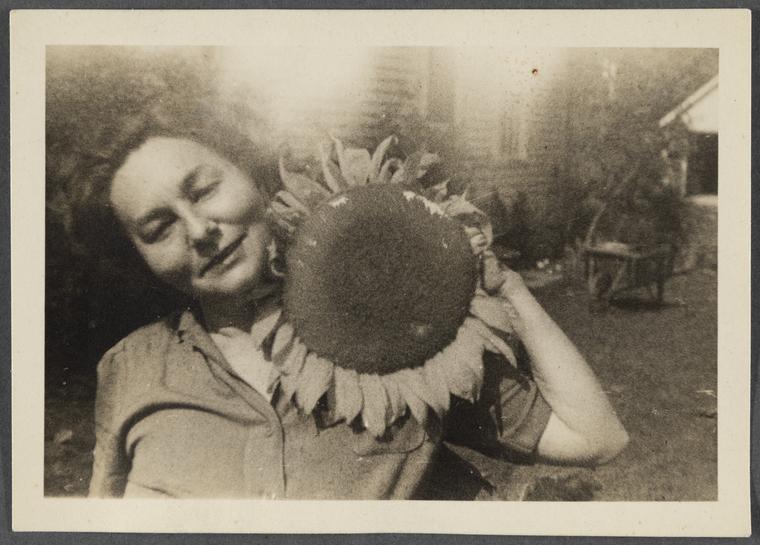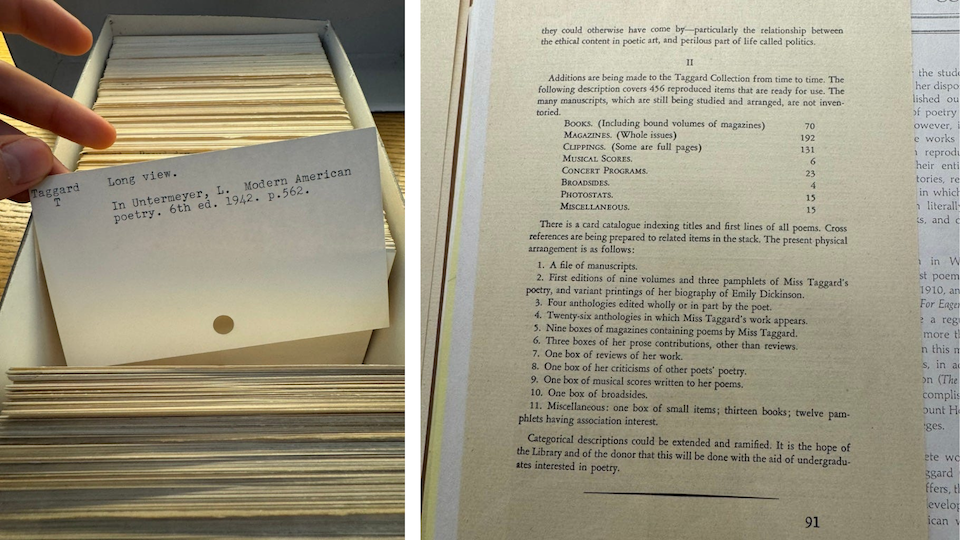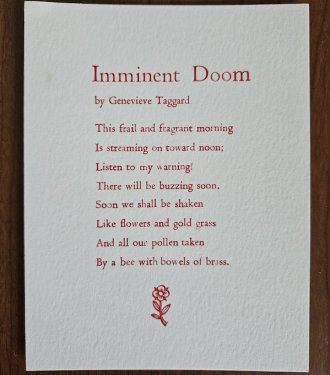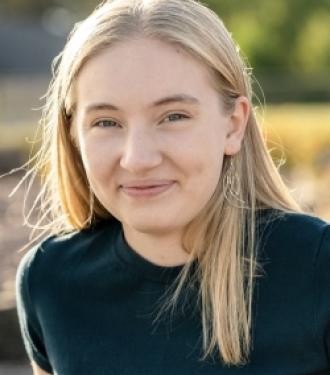
Photograph of Genevieve Taggard with a sunflower inflorescence; New York Public Library Digital Collections
The Intersection of Poetry, Research, and Book Arts
Why are some poets remembered and glorified, while others fade into obscurity? And when you do stumble upon a “nobody” poet, why research them and make their work discoverable and interpretable for others? These two questions, and a desire “to recover another feminist and political poet who was subject to erasure” formed the basis of Ella Grim '25's Stamps Scholar research project.
***
Ella hits play. The sound of scratchy vinyl, then a quick, steady voice punctuates the air, reciting a (slightly edited) Emily Dickinson poem:
“I’m Nobody! Who are you?
Are you – Nobody – too?
Then there’s a pair of us!
Don’t tell! They’d banish us – you know.”
The voice in the audio belongs to poet, scholar, and activist Genevieve Taggard, and hearing it was Ella’s first encounter with Taggard’s voice. But Ella felt she already knew Taggard. Up to that moment, Ella had spent months poring over Taggard’s archived letters, manuscripts, and other ephemera housed at Rauner Special Collections Library.


